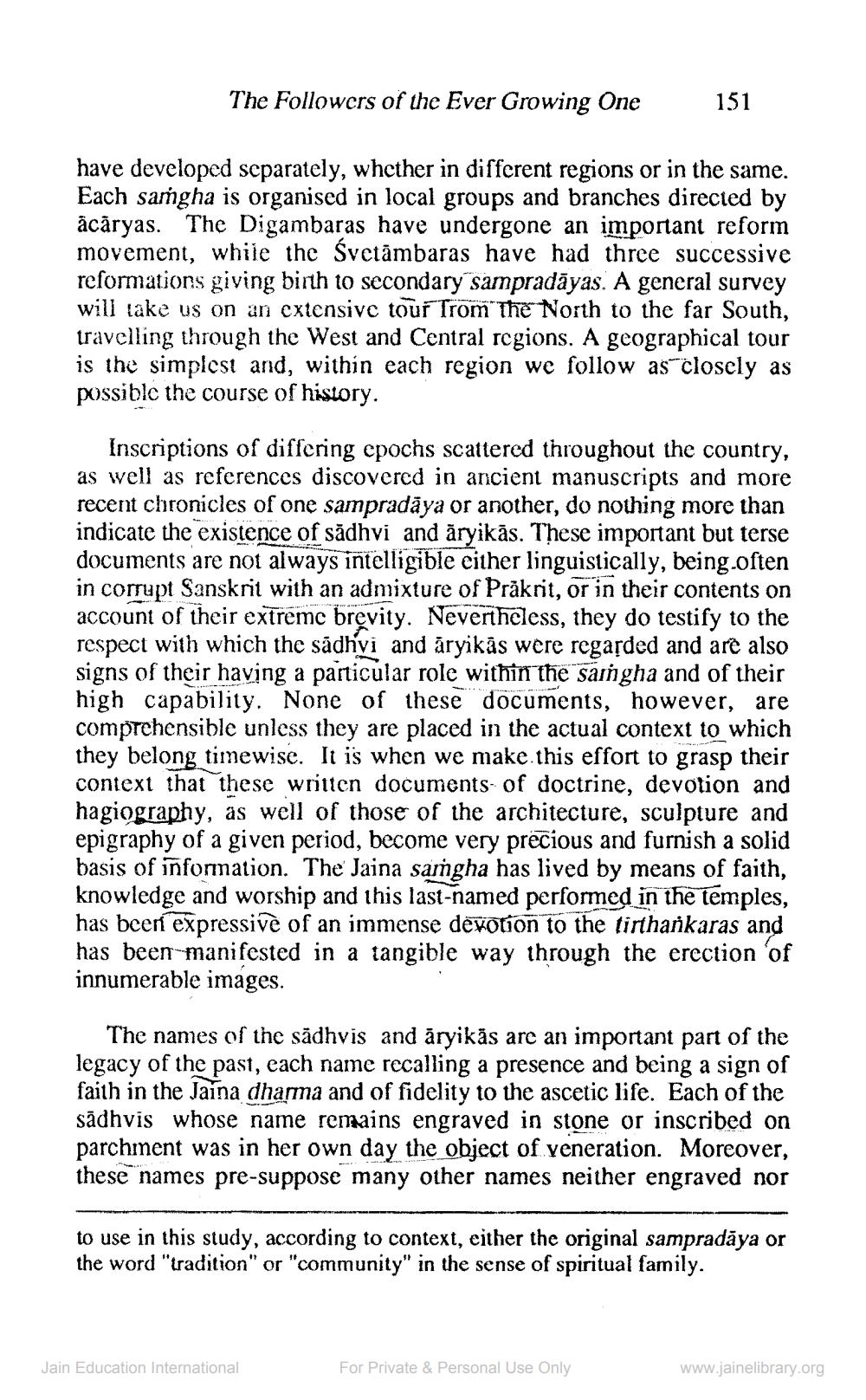________________
The Followers of the Ever Growing One
151
have developed separately, whether in different regions or in the same. Each sargha is organised in local groups and branches directed by äcāryas. The Digambaras have undergone an important reform movement, while the Svetāmbaras have had three successive reformations giving birth to secondary sampradāyas. A general survey will take us on an extensive tour Trom the North to the far South, travelling through the West and Central regions. A geographical tour is the simplest and, within each region we follow as closely as possible the course of history.
Inscriptions of differing cpochs scattered throughout the country, as well as references discovered in ancient manuscripts and more recent chronicles of one sampradāya or another, do nothing more than indicate the existence of sădhvi and äryikās. These important but terse documents are not always intelligible either linguistically, being.often in corrupt Sanskrit with an admixture of Prakrit, or in their contents on account of their extremc brevity. Nevertheless, they do testify to the respect with which the sādhvi and äryikās were regarded and are also signs of their having a particular role within the saingha and of their high capability. None of these documents, however, are comprehensible unless they are placed in the actual context to which they belong timewise. It is when we make this effort to grasp their context that these written documents of doctrine, devotion and hagiography, as well of those of the architecture, sculpture and epigraphy of a given period, become very precious and furnish a solid basis of information. The Jaina samgha has lived by means of faith, knowledge and worship and this last-named performed in the temples, has been expressive of an immense devotion to the tirtharkaras and has been manifested in a tangible way through the erection of innumerable images.
The names of the sādhvis and äryikās are an important part of the legacy of the past, each name recalling a presence and being a sign of faith in the Jaina dharma and of fidelity to the ascetic life. Each of the sādhvis whose name remains engraved in stone or inscribed on parchment was in her own day the object of veneration. Moreover, these names pre-suppose many other names neither engraved nor
to use in this study, according to context, either the original sampradāya or the word "tradition" or "community" in the sense of spiritual family.
Jain Education International
For Private & Personal Use Only
www.jainelibrary.org




